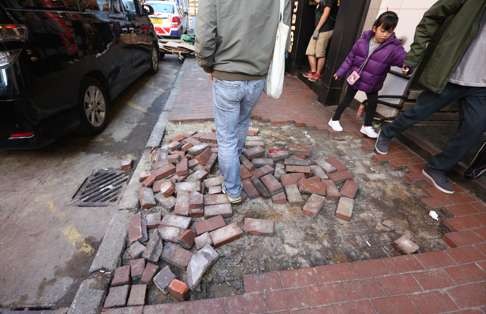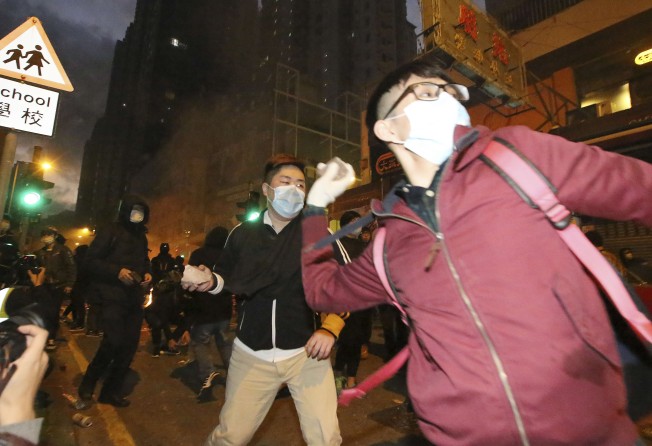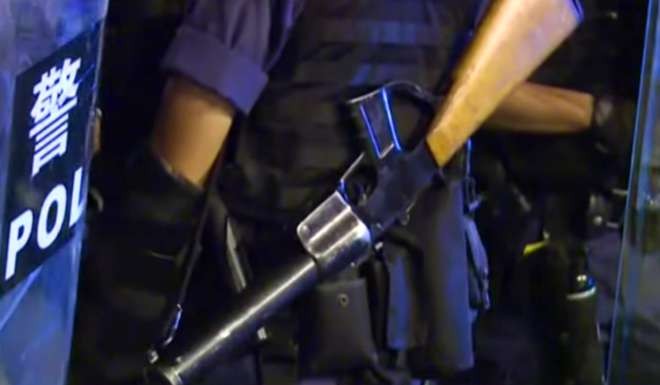
Hong Kong police test new rubber bullets in wake of Mong Kok riot
Rounds are said to be more effective at longer range than those currently in use, but further study is needed as impact may cause serious injury

New anti-riot bullets designed for dealing with armed protesters in the event of mob violence are being tested by Hong Kong police, the Post has learned.
Force insiders said the use of new rubber rounds – defined as non-lethal equipment – was recommended in the wake of the Mong Kok riot in February, during which protesters hurled bricks, set fires and clashed with police, leaving nearly 100 officers injured.
“As live ammunition cannot be used, rubber bullets will be the best option to deal with brick-hurling rioters and armed demonstrators and to stop their action,” a police source said, adding that the new rubber rounds were more accurate.
Police are currently equipped with rubber baton rounds fired from 38mm-calibre Federal Riot Guns, nicknamed “big mouth guns”, with an effective range of up to 20 metres. It is understood that the baton rounds are considered ineffective for targets beyond this range.
The new rubber bullets are fired from Remington shotguns, and their effective range is between 30 and 50 metres, according to a source with knowledge of the internal review on arms and equipment.
“[The bullet] is blunt ... After being hit, the target feels pain [and may develop] bruises but will never bleed out,” he said.
But the source admitted that those struck at close range may suffer serious injuries.
“Therefore, we have to test the firing range and the effects on human bodies before management makes the final decision,” he said.

A senior police officer, who did not want to be named, said the bullets could cause vision impairment to those shot in the eyes. Fractures or damage to organs, such as the kidneys, may be sustained by those hit at close range.
“This is why the existing rubber baton rounds are restricted to being aimed at the legs only,” he said.
The sources said advisers from the Police Tactical Unit were responsible for testing the new bullets at their training ground in Fanling.
The bullets are among new mid-range crowd control equipment, such as pepper balls, recommended by an internal subcommittee set up to review police arms, equipment and training in response to the Mong Kok riot. Two other subcommittees were established to review operations and support.
Police will from time to time review different items of equipment to ensure their suitability for operational purposes.
The Junior Police Officers’ Association said it welcomed the news that the force was studying different types of gear in an effort to upgrade officers’ equipment.
“Such improvements could help frontline officers to meet the changes and demands in society,” a spokesman said.
The police department said it did not comment on “specific operational considerations”.
“Police will from time to time review different items of equipment to ensure their suitability for operational purposes,” it said.
The Mong Kok riot, which broke out on the first night of the Lunar New Year, lasted more than 10 hours. Protesters lit fires at 22 locations and dug up about 2,000 bricks from pavements to throw at police.
So far, more than 90 people have been arrested in connection with the riot. Officers from the Organised Crime and Triad Bureau are still searching for about 10 others.
On November 6, two policewomen were hurt near the central government’s liaison office in Western during a tense overnight confrontation between police and protesters following Beijing’s intervention in the oath-taking controversy. One of them suffered a leg injury after being struck by a brick.
Some masked protesters dug up about 10 bricks from the pavement at Des Voeux Road West before police were alerted. They hurled at least two bricks at officers during the incident.
Police have been testing alternative crowd control measures to tear gas in the wake of the Mong Kok riot and the Occupy protests in 2014. It is understood tear gas was no longer considered the best option after it was used on protesters during the Occupy sit-ins as it generated widespread public resentment.
